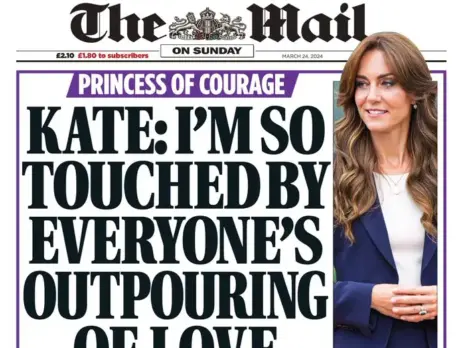
The New York Times is experimenting with a new “pop-up newsletter” that will look to report on the US mid-term elections in a way that explains the country’s politics to bewildered onlookers from outside America.
Abroad in America will launch next week and run until mid-November. It is free to subscribe to and will be written former NY Times London correspondent Sarah Lyall – arriving in inboxes twice a week.
Editorial director of newsletters at the NY Times, Elisabeth Goodridge, said the paper was pushing newsletters because it has seen a “direct correlation” between them and digital growth.
“We have seen that if you subscribe to a newsletter you have higher propensity to go to our website and then re-subscribe,” she told Press Gazette.
She said Abroad In America would essentially be an “in-app experience, where you read free New York Times journalism in your email client and then you click delete” rather than driving audiences to the website, which is behind a metered paywall, through a series of links.
“People really like that,” she said. “Remember, the most valuable email that you get is something that holds invaluable information for you.
“What we are realising is that [people] like the familiarity of email, they like the conversational tone, they like the idea that [columnists] Andrew Ross Sorkin, or Max Fisher, or Sarah Lyall are sending them an email.”
Lyall, who lived in the UK for 15 years before moving back to the US in 2013, will offer her insights and links to stories on the NY Times website that might be of interest to readers – although this could change as the newsletter evolves.
The NY Times sends out more than 55 newsletters in total, of which just under ten are for international audiences – from Canada to Australia. It also sends out a newsletter called El Times for Spanish-speaking readers.
Goodridge said the paper had seen “great success” with pop-up newsletters, recently launching one for New York millenials and also running Offside, an opinion-led missive, during the Russian World Cup.
“We keep seeing people really like newsletters if you do them right, if you do them smart, if you staff them correctly,” she said. “We’re very bullish on them.”
The NY Times looks at key metrics such as subscribe and unsubscribe rates, open rates and click-through rates to measure success against editorial instincts for what would work in people’s inboxes.
Of the total sign-ups for Abroad in America so far, 12 per cent are from the UK, 30 per cent from Europe and 16 per cent from Canada. Goodridge said they are half way to reaching their subscriber goal, but did not give a figure.
Goodridge has been with the NY Times for more than a decade, including a spell as deputy Metro editor.
She took up her current role, which was newly created, in late 2016 after writing a report raising the lack of editorial oversight over emailed content. “We were just creating our newsletters in fits and starts, there was no underlying strategy,” she said.
She said the strength of newsletters was that it took the news to “where readers already are”.
She added: “We’re not asking them to go to our website, we’re not asking them to go buy a paper, they have already gotten to the habit of checking their emails – especially people who sit in front of a desk, so we are providing them information where they want it.
“Also, newsletters can be very conversational. It’s a different kind of journalism than a tweet, than an article, and should be considered differently as such. It should be more familiar. It’s very much like a column or speaking like a podcast, it should be conversational.
“The most valuable email you get is probably from someone you care about or about someone you care about, and so if you’re invested in the brand and what New York Times can bring to you, we think we should provide that journalism in a way and we should also be very transparent and communicative.”
To try and combat reader fatigue – “probably every other website you go to is popping up a window saying ‘give us your email address’” – Goodridge says targeting the right audience for a newsletter is crucial.
In fact she said her “number one strategy goal is understanding the audience” for any newsletter.
Her top tips for getting good results from a a digital missive are to “first figure out whether or not this is the right medium to reach this particular audience and solve this particular need, and then make sure you have staff who care about it”.
Lyall said her job will be explaining the political maelstrom to readers unfamiliar with the US system through the twice-weekly newsletters.
“American politics is so bewildering in lots of ways and so much has happened, and so much happened while I was gone, and I think even people who live here now are having a hard time sorting it out and that’s part of the point of the newsletter – to just to cut through the incredible amount of noise and try to find some way of making sense of it all,” she said.
“It can be very daunting when you see 20 stories a day and you don’t really know how to even distinguish between the ones that are important and the ones that are incremental, in the week stories, so I’m going to try to distill things and write about things that are slightly emblematic as a way to explain the rest of it.”
She added: “We’re really making it up as we go along and one thing we invited people to do when we made the announcement was to send in questions and I’ve gotten quite a bit of response to that, so I’m going to be answering some people’s questions.
“Some of them are hard to answer – a great many people have essentially said: ‘What the fuck is wrong with your country?’
“I’m not really sure I’m the right person to answer that, maybe you need a psychiatrist for that. And I do think one of the issues that all of us face at any newspaper now is how to write from a point of view of intelligence and sophistication without seeming partisan.”
Lyall said the email would be written in a conversational style, but would still be impartial news reporting and not opinion. As such it will not be either for or against President Trump.
Remaining impartial is something both women said was extremely important for the NY Times. Trump has repeatedly attacked the US news media as “fake news” both online and at press conferences and rallies.
Said Lyall: “One of the issues with the New York Times since this election is the assumption that it is a biased news organisation and people don’t read the news articles very carefully. If you listen to Fox News it will excoriate the New York Times as some kind of leftist rag and that’s really painful.
“When I was covering news in England, half the people would be like ‘I hate you, you’re a reporter’, because I think reporters are not held in the highest esteem in the UK. So at least when you said you were from the New York Times there was a feeling that that’s a respectable place that if anything errs on the side of being too sober and too impartial.
“And it really makes me sad to go around the United States now and hear people, depending on their political views, just denounce you and I’m afraid some of them are Fox listeners…
“I had this terrible conversation with this guy in Georgia when I was reporting a story, I said I was from the Times and he said: ‘Let me ask you a question, why are you so biased.’ And I said: ‘What do you mean? Do you read the paper?’ And he said: ‘No, I would never read the paper, Sean Hannity on Fox told me you were biased.’
“And I just don’t know how to handle that kind of thing, because I think we’re so careful and when we make mistakes we own up to them, we don’t manipulate the news to make it sound one way or another and I think Republicans really believe we do.”
Lyall said she had relatively free reign to come up with stories for the newsletter, and is planning on travelling to states where political contests will be closely fought and touted the possibility of attending a Trump rally.
“I think it’s going to be scary [covering a Trump rally as a reporter],” she said.
“Now if you go as a reporter and are in the press pen, people start chanting violent things at you. Trump will point to the reporters and just yell ‘fake news’ at them.
“You get this really bizarre situation where you’re actually trying to report what happened and people are threatening you.
“I feel as a reporter – it’s sort of stupid to feel this way – but I feel like your identity [as a reporter] in some ways protects you because you can’t take things personally.
“You’re not there in a personal capacity, you’re there as a professional. And so as long as I’m not physically attacked, things like that don’t really bother me.”
But, she added: “I fell desperately sad that a profession that I really admire and really think in this country has been an extraordinary check on the government and an extraordinary institution that sheds light on things and is entertaining and brings things to people’s homes that they wouldn’t know about is now held in such low regard because the President is a very powerful person and when he makes even off-hand comments they really reverberate down and that makes me desperately sad.”
Sign up for Abroad In America and send any questions you would like Lyall to answer in the newsletter about the US mid-term elections to her via Twitter at @sarahlyall.
Picture: Reuters/Carlos Barria
Email pged@pressgazette.co.uk to point out mistakes, provide story tips or send in a letter for publication on our "Letters Page" blog







